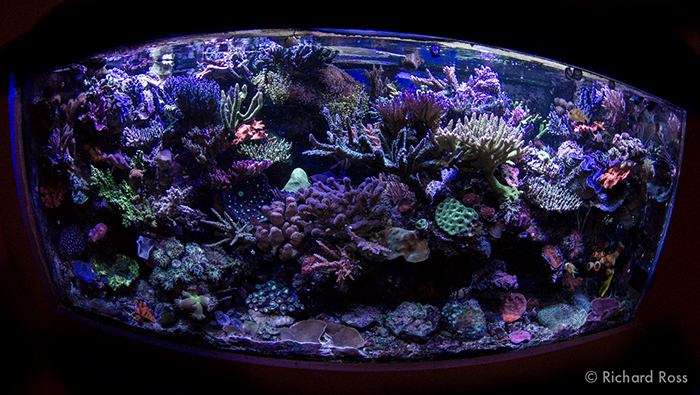Randy Holmes-Farley
Reef Chemist
View Badges
Staff member
Super Moderator
Excellence Award
Expert Contributor
Article Contributor
R2R Research
My Tank Thread
- Joined
- Sep 5, 2014
- Messages
- 67,311
- Reaction score
- 63,658
There is a long history of published literature experiments on coral calcification rates vs phosphate that have warned reefers away from high phosphate, and it is hard to discount those entirely, even if the results showed variable and sometimes contradictory effects, but reefer results have also sometimes been very good even at phosphate levels exceeding 1 ppm (such as Richard Ross' aquarium) described here:

 reefs.com
reefs.com
Since it came up in another thread and might get lost there, I thought I'd copy a section of a recent post of mine related to a recent study in the wild of coral frags that show very little coral skeletal surface area reduction from elevated phosphate, and skeletal surface area was higher than control with nutrients that pulsed up to, but did not stay at the highest levels.
This paper from 2021 shows that the calcification of coral frags at elevated N and P calcified at nearly the same rate as controls (Figure 2a):
The concentrations they used:
High N and P: "ammonium and phosphate were both permanently elevated to 14 and 10 µmol L−1 respectively."
That is 0.2 ppm ammonia and 0.95 ppm phosphate
Control N and P:
"During this study, seawater concentrations of ammonium and phosphate averaged 0.55 and 0.32 µmol L−1 respectively across the experimental period,"
That is 0.009 ppm ammonia and 0.03 ppm phosphate.
This is exactly the range of phosphate values one might consider normal for a reef tank (0.03 ppm) and high (0.95 ppm), and yet the drop in skeletal surface area at the end of the study was quite small (23.23 cm2 for the high NP and 26.14 cm2 for the control). Even more striking, the pulsed high N and P (as opposed to the continuous high NP) was even HIGHER than control at 28.27 cm2.

Skeptical Reefkeeping 9: Test Kits, Chasing Numbers and Phosphate
By Rich Ross and Chris Jury There are many standard parameters in the reefkeeping world that aquarists strive to match in their home reefs – water quality,
Since it came up in another thread and might get lost there, I thought I'd copy a section of a recent post of mine related to a recent study in the wild of coral frags that show very little coral skeletal surface area reduction from elevated phosphate, and skeletal surface area was higher than control with nutrients that pulsed up to, but did not stay at the highest levels.
This paper from 2021 shows that the calcification of coral frags at elevated N and P calcified at nearly the same rate as controls (Figure 2a):
The concentrations they used:
High N and P: "ammonium and phosphate were both permanently elevated to 14 and 10 µmol L−1 respectively."
That is 0.2 ppm ammonia and 0.95 ppm phosphate
Control N and P:
"During this study, seawater concentrations of ammonium and phosphate averaged 0.55 and 0.32 µmol L−1 respectively across the experimental period,"
That is 0.009 ppm ammonia and 0.03 ppm phosphate.
This is exactly the range of phosphate values one might consider normal for a reef tank (0.03 ppm) and high (0.95 ppm), and yet the drop in skeletal surface area at the end of the study was quite small (23.23 cm2 for the high NP and 26.14 cm2 for the control). Even more striking, the pulsed high N and P (as opposed to the continuous high NP) was even HIGHER than control at 28.27 cm2.




















